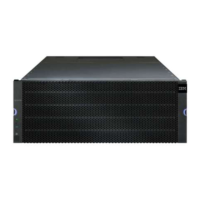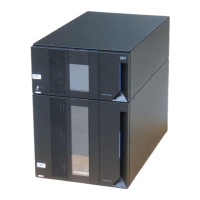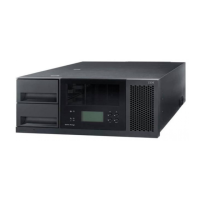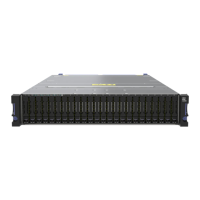Parameter Description
driveType The type of drive that you want to use in the logical drive. You cannot mix drive
types.
You must use this parameter when you have more than one type of drive in your
storage subsystem.
Valid drive types are :
v fibre
v SATA
v SAS
If you do not specify a drive type, the command defaults to fibre.
capacity The size of the logical drive that you are adding to the storage subsystem. Size is
defined in units of bytes, KB, MB, GB,orTB.
owner The controller that owns the logical drive. Valid controller identifiers are a or b, where
a is the controller in slot A, and b is the controller in slot B. If you do not specify an
owner, the controller firmware determines the owner.
cacheReadPrefetch The setting to turn on or turn off cache read prefetch. To turn off cache read prefetch,
set this parameter to FALSE. To turn on cache read prefetch, set this parameter to TRUE.
segmentSize The amount of data (in KB) that the controller writes on a single disk drive in a
logical drive before writing data on the next disk drive. Valid values are 8, 16, 32, 64,
128, 256,or512.
usageHint The setting for both cacheReadPrefetch parameter and the segmentSize parameter to
be default values. The default values are based on the typical I/O usage pattern of
the application that is using the logical drive. Valid values are fileSystem, dataBase,
or multiMedia.
enclosureLossProtect The setting to enforce enclosure loss protection when you create the subsystem. To
enforce enclosure loss protection, set this parameter to TRUE. The default setting is
FALSE.
drawerLossProtect The setting to enforce drawer loss protection when you create the mirror repository
subsystem. To enforce drawer loss protection, set this parameter to TRUE. The default
value is FALSE.
dssPreAllocate The setting to make sure that reserve capacity is allocated for future segment size
increases. The default value is TRUE.
securityType The setting to specify the security level when creating the subsystems and all
associated logical drives. These settings are valid:
v none—The subsystem and logical drives are not secure.
v capable—The subsystems and logical drives are capable of having security set, but
security has not been enabled.
v enabled—The subsystem and logical drives have security enabled.
T10PI The setting to specify that an subsystem, and the logical drives within the subsystem,
has T10 PI (Protection Information) protection to make sure that the data maintains its
integrity. When you use this parameter, only protected drives can be used for the
subsystem. These settings are valid:
v none – The subsystem does not have T10 PI (Protection Information) protection.
v enabled – The subsystem has T10 PI (Protection Information) protection. The
subsystem supports protected information and is formatted with protection
information enabled.
3-88 IBM System Storage DS3000, DS4000, and DS5000: Command Line Interface and Script Commands Programming Guide

